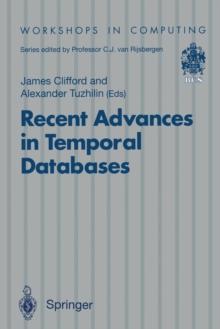
Persistent Object Systems : Proceedings of the Sixth International Workshop on Persistent Object Systems, Tarascon, Provence, France, 5-9 September 1994 PDF
Edited by Malcolm Atkinson, David Maier, Veronique Benzaken
Part of the Workshops in Computing series
Description
The Sixth International Workshop on Persistent Object Systems was held at Les Mazets des Roches near Tarascon, Provence in southern France from the fifth to the ninth of September 1994.
The attractive context and autumn warmth greeted the 53 participants from 12 countries spread over five continents.
Persistent object systems continue to grow in importance.
Almost all significant uses of computers to support human endeavours depend on long-lived and large-scale systems.
As expectations and ambitions rise so the sophistication of the systems we attempt to build also rises.
The quality and integrity of the systems and their feasibility for supporting large groups of co-operating people depends on their technical founda- tion.
Persistent object systems are being developed which provide a more robust and yet simpler foundation for these persistent applications.
The workshop followed the tradition of the previous workshops in the series, focusing on the design, implementation and use of persistent object systems in particular and persistent systems in general.
There were clear signs that this line of research is maturing, as engineering issues were discussed with the aid of evidence from operational systems.
The work presented covered the complete range of database facilities: transactions, concurrency, distribution, integrity and schema modifica- tion.
There were examples of very large scale use, one involving tens of terabytes of data.
Language issues, particularly the provision of reflection, continued to be important.
Information
-
Download - Immediately Available
- Format:PDF
- Publisher:Springer London
- Publication Date:06/12/2012
- Category:
- ISBN:9781447121220
Information
-
Download - Immediately Available
- Format:PDF
- Publisher:Springer London
- Publication Date:06/12/2012
- Category:
- ISBN:9781447121220










